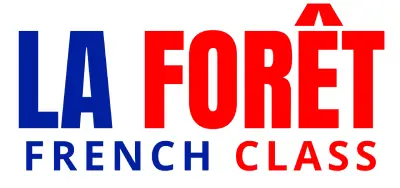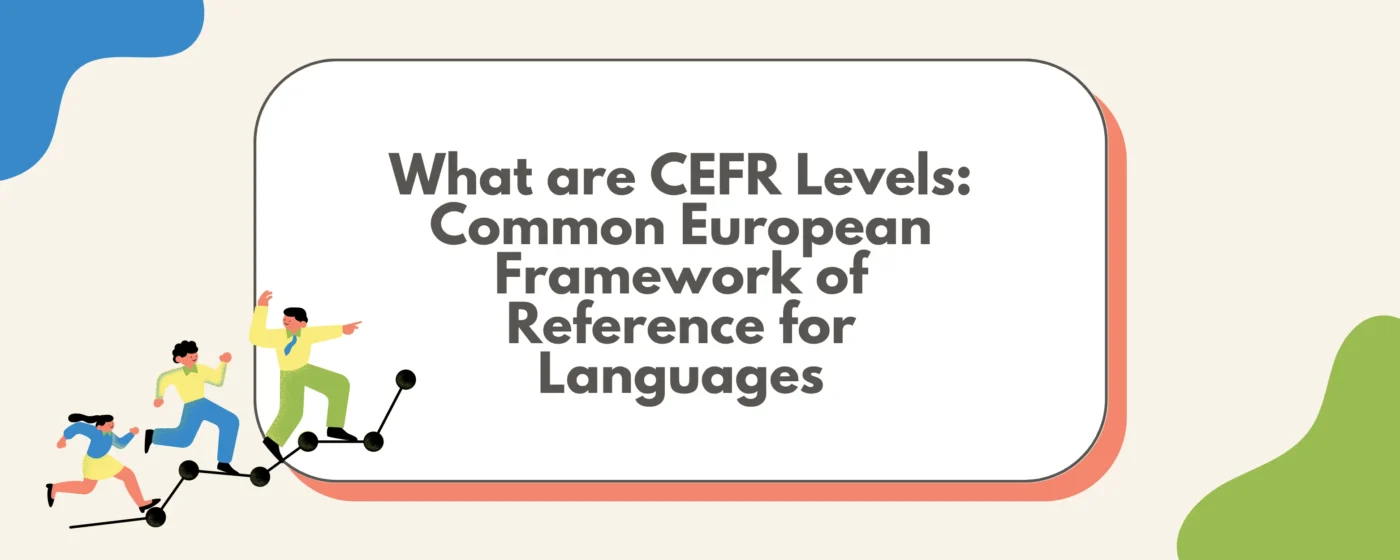Ever felt like you’re a linguistic chameleon, effortlessly switching between languages? Or maybe you’re more of a linguistic caterpillar, slowly but surely making your way towards fluency?
Either way, the Common European Framework of Reference for Languages (CEFR) is here to help you navigate the world of language learning. Think of the CEFR as a language level GPS. It’s a standardised system that maps out your language journey, from beginner to bilingual badass. It’s like having a trusted companion on your quest for linguistic greatness.
This guide will break down each CEFR level from A1 to C2, giving you practical examples and tips to help you reach your French fluency goals. So, whether you’re a French beginner or a seasoned polyglot, get ready to crack the CEFR code and unlock your full linguistic potential!
Key Takeaways
- The CEFR system helps learners understand their current French level clearly and gives a simple structure for tracking progress through different stages.
- The framework includes six levels ranging from A1 beginner skills to C2 expert ability, making language growth easier to recognise and measure.
- Early levels like A1 and A2 focus on building confidence with everyday words, basic conversations, and simple communication in familiar situations.
- Higher levels such as C1 and C2 represent strong fluency, where learners handle complex ideas easily and express themselves clearly in most contexts.
What is the CEFR?
CEFR, or the Common European Framework of Reference for Languages, is a standardised system used to assess language proficiency across Europe and globally. The CEFR provides a global scale for measuring language proficiency, making it easier for learners and educators to compare skills across different languages and countries. It’s like a language learning GPS, providing a clear roadmap from beginner to advanced levels.
What Are CEFR Levels in Language Proficiency?
The CEFR groups the six levels into three broad categories: ‘basic user’ (A1, A2), ‘independent user’ (B1, B2), and ‘proficient user’ (C1, C2). This classification helps language teachers and learners understand what individuals can typically perform at each stage.
The CEFR is divided into six levels, each referencing a different level of proficiency:

It’s like climbing a language mountain—you start at the bottom and aim for the top.
The 6 CEFR Levels Explained
Think of the CEFR levels as a linguistic obstacle course. Each level presents its own challenges and rewards, but with the right guidance and practice, you can conquer them all. By understanding your CEFR level, you can set realistic goals, identify areas for improvement, and track your progress effectively. The CEFR is especially useful for anyone learning a new language, as it provides a clear framework for describing language ability at each stage of the journey. Allez-y. Let’s discover more of this article!
A1 : Beginner
A1, the linguistic beginner level!
Here, think of yourself as a newborn baby learning to crawl. That’s where you are at the A1 level. You’re taking those first tentative steps in the world of French. You can understand basic phrases and follow simple instructions. Not only this, but you can also introduce yourself as well as others! So cool.
A2 : Pre-Intermediate
A2, the linguistic adventurer!
At the A2 level, you venture into the realm of basic conversations. Imagine yourself at a bustling market, trying to ask for the price of a souvenir. Or perhaps you’re on a train, attempting to strike up a conversation with a fellow passenger about your daily routine. These are the kinds of everyday interactions you can confidently handle at the A2 level! You can understand and use simple sentences related to familiar topics. You can also follow basic instructions and make requests.
B1 : Intermediate (Independent User)
B1, the comfortable conversationalist!
At the B1 level, you’re starting to feel comfortable in your linguistic skin. You can handle more complex conversations, like discussing your hobbies, work, or even planning a weekend getaway. Imagine attending a casual meeting in French – you might not understand every single word, but you can follow the conversation and contribute your thoughts.
At this level, you can understand the main points of clear standard input on familiar matters regularly encountered in work, school, or leisure. You’re also starting to feel more confident expressing opinions and making simple arguments. And let’s not forget about those all-important cultural references – you’re starting to get the hang of them!
B2 : Upper-Intermediate
B2, the experienced linguist!
At the B2 level, you’re a seasoned language learner, ready to take your skills to the next level! You can confidently discuss familiar and abstract topics, expressing your opinions and engaging in discussions with native speakers. You can understand complex texts and follow lectures with ease. This level is often a requirement for university admissions and professional settings, demonstrating your ability to communicate effectively in a variety of contexts.
C1 : Advanced
C1, the (almost) seasoned linguistic ninja!
At the CEFR C1 level, you’re a linguistic powerhouse! You can effortlessly understand complex texts and communicate fluently without breaking a sweat. Think about working in a French-speaking environment – you’ll be able to confidently participate in meetings, negotiate deals, and deliver presentations with ease. How cool does that sound!
You’re also a master of nuance, able to understand subtle shades of meaning and express yourself with precision. From discussing philosophical concepts to debating current events, you’ll be able to hold your own in any conversation.
C2 : Proficient (Proficient User)
C1, the seasoned master!
At the CEFR C2 level, you’re a linguistic master. You have complete mastery of the language, effortlessly navigating complex topics and nuances, much like Yoda! You can handle academic papers, legal documents, and even technical manuals with ease. Your French is so impeccable, you could pass for a native speaker.
Imagine being able to discuss philosophical concepts, debate political issues, or analyse literary works in French with complete confidence. That’s the level of proficiency you’ll achieve at C2. You’re not just fluent, you’re a linguistic virtuoso. Bravo on achieving near-native proficiency!
Illustrative Descriptors and Assessment
One of the standout features of the CEFR is its use of illustrative descriptors—detailed statements that paint a clear picture of what a learner can do at each stage of their language learning process. These descriptors cover all the key language activities: speaking, listening, reading, and writing. For language teachers and assessors, these descriptors are invaluable tools for evaluating language proficiency and language ability in real-world contexts.
By using the illustrative descriptors alongside the common reference levels, teachers can accurately assess a learner’s strengths and areas for improvement, ensuring that language teaching is tailored to individual needs. They also help learners understand what is expected at each level, making it easier to set goals and track progress. Whether you’re planning lessons, designing assessments, or simply trying to describe your own language skills, the CEFR’s illustrative descriptors provide a practical, transparent way to measure and support language learning.
How to Test Your CEFR Level
So, you’ve conquered the CEFR levels, but how do you know exactly where you stand? Well, there are a few ways to assess your linguistic prowess!
- Official Tests
One of the most reliable methods is to take an official CEFR-aligned test. Institutions like Alliance Française offer a range of tests, from A1 to C2, to accurately assess your French language skills. These tests are recognized worldwide and can provide you with a valuable certificate to showcase your proficiency.
- Self-Assessment
While official tests are great, you can also get a good idea of your CEFR level through self-assessment. There are numerous online resources and language apps (like Duolingo and Memrise) that offer quizzes and exercises to help you evaluate your skills. Just remember, self-assessment is subjective, so it’s always a good idea to combine it with external validation.
Why Get Certified?
Well, we understand your worries. But having an official CEFR certificate can open doors to new opportunities! It’s a powerful tool that can boost your resume, impress potential employers, and gain admission to prestigious universities. So, if you’re serious about your language learning journey, consider taking an official test and getting certified. Allez.
Tips To Improve CEFR Level
Ready to climb the CEFR ladder? Here are some actionable tips to help you progress from one level to the next: Developing general competences, such as cultural awareness and learning strategies, alongside language skills is crucial for supporting effective communication at each CEFR level.
A2 to B1: Immersion and Active Practice
- Surround yourself with the language by watching movies, listening to music, and reading books in your target language.
- Engage in daily conversations with native speakers or language exchange partners.
- Structured lessons from language schools such as the Alliance Francaise or La Forêt French Class can provide a solid foundation and guidance.
- Apps like Duolingo and Memrise can supplement your studies.
B1 to B2: Expanding Vocabulary and Grammar
- Explore a variety of texts, from newspapers to novels.
- Record new words and their meanings in a vocabulary journal!
- Start with simple sentences and gradually progress to more complex essays.
B2 to C1: Mastering Complex Topics
- Engage in debates and discussions on various topics.
- Evaluate arguments and perspectives in articles and essays.
- Practice expressing your thoughts in a clear and organised manner.
- Ask native speakers or teachers to review your writing.
C1 to C2: Perfection and Nuance
- Explore specialised literature in your field of interest.
- Practise drafting emails, letters, and proposals.
- Participate in conferences and seminars.
- Practise speaking with native speakers in various settings.
Pro tip: Remember, a balanced approach is key. While grammar study is essential, don’t neglect speaking practice. The more you immerse yourself in the language and actively use it, the faster you’ll progress through the CEFR levels. Remember to take breaks as well to rejuvenate your mind, because all work and no play makes Jack a dull boy!
Frequently Asked Questions
1. What is a good CEFR level?
A “good” CEFR level depends on your individual goals and needs. If you’re planning to study at a university or work in a professional setting, a B2 or higher is generally considered good. However, if your goal is simply to communicate effectively in everyday situations, achieving an A2 or B1 level can be very beneficial and sufficient! It all depends on you.





